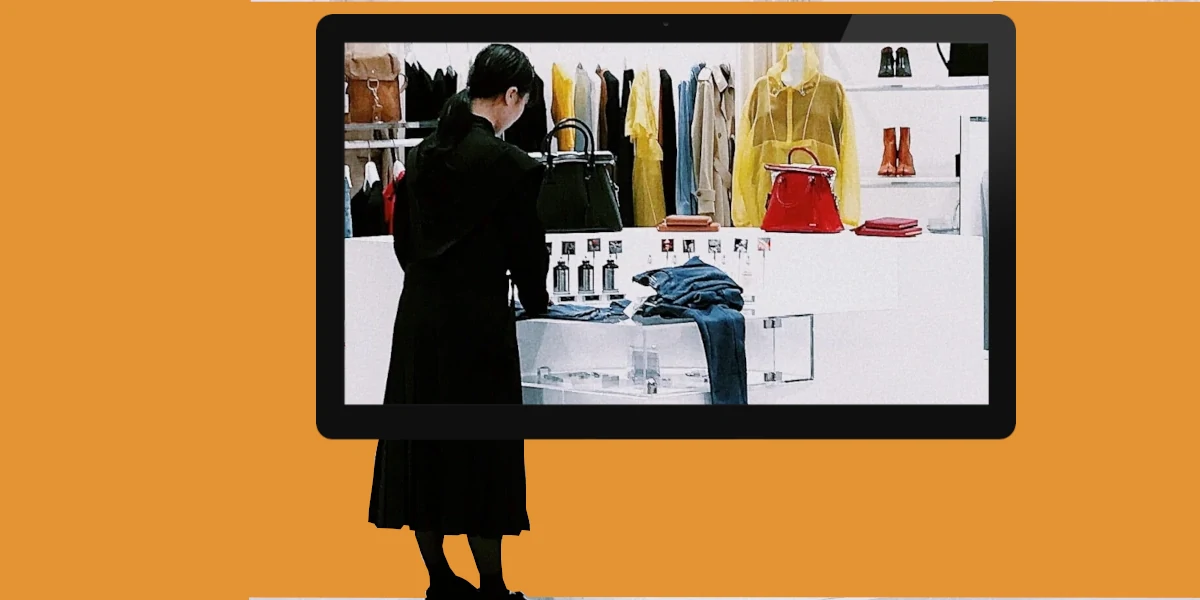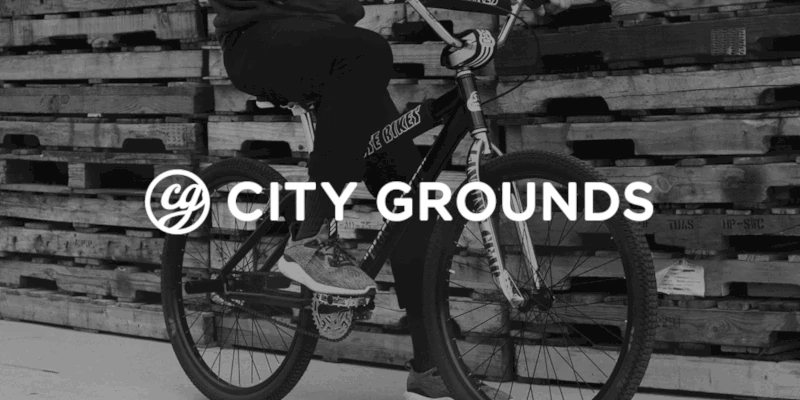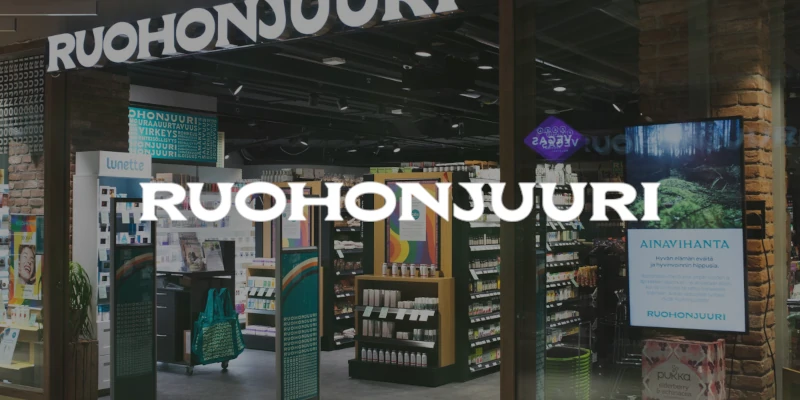AI Powered Merchandizing Playbook for Shopify

DISCOVERY, CONVERSIONS, AND REVENUE: learn why you need AI powered merchandizing and how you can effortlessly act to continually create relevant, scalable and revenue generating product discovery experiences for all your visitors.
Ecommerce merchandizing is changing
The main objective of ecommerce merchandizing, whether you have a small or extensive product catalog, is guiding your visitors through the buying journey.
The act of merchandizing ensures visitors get a consistent, on-brand experience, no matter how they arrive on your site or navigate around it.
Top ecommerce brands today are moving beyond traditional practices to create highly personalized shopping experiences based on user real time behavior.
Brick-and-mortar vs Online
In physical retail stores, merchandizing includes engaging customers from the moment they walk by with elaborate window displays or sales associates offering help, to the moment they exit after being exposed to in-store lighting, scents, music and other elements aimed at staging a brand-unique buying experience and a lasting impression.
With a physical store buyer demographics and buying patterns are known, yet these factors become unpredictable with an online store.
Online visitor demographics vary from one time interval to another. Online buyers tend to pursue an endless number of buying paths, and their buying behavior is always changing.
Why merchandizing is important for your Shopify store
On a strategic level, merchandizing helps you take control of how your brand is perceived and how visitors shop.
Tactically, merchandizing is a key part of a comprehensive sales strategy to both increase the average order value (AOV) from your customers and inspire customers to return in the future.
Merchandizing within ecommerce is meant to guide customers through the buying journey as quickly as possible, presenting shoppers with the most relevant experience, products, and offers before they jump to the next website or task.
Popular merchandizing strategies
Done right, online merchandizing is a major value-provider and a source of gravitational pull toward the value of your brand.
There are slight differences between broader personalized product recommendations and merchandizing approaches, and in most cases they are used together.
The list of merchandizing strategies and tactics is long:
- Group related products
- Group similar products
- Group brands
- Separate products from accessories
- Boost on-sale products
- Boost high-converting products
- Boost high margin products
- Boost trending products
- Rotate products for repeat visitors
- Boost popular products for new visitors
- Boost products based on demographic
- Demote out-of-stock items
- Demote products with limited sizing availability
- Demote products with missing images
- Incentivize higher AOV
- Navigation built for ecommerce
- Basic segmentation
- Detailed personalization for advanced merchandizing
- Homepage Merchandizing
- Collection-Oriented Merchandizing
- Optical Merchandising for Product Pages
- Category-Based Merchandizing
- Spotlight products with badges
- Seasonal and geographic merchandizing
- Feature banners beyond the landing page
- Inline banners
- Setting up merchandizing landing pages
- Optimize site to be accessible on any device
- Use product recommendations
- Display product social viability
- Stimulate buying instinct with digital stickers
- Optimize merchandizing decision
- Leverage a live chat
- Optimized search and browse
…
Day-to-day implementation of these strategies on your Shopify store requires tools, know-how, and above all a lot of hard work.
Manual merchandizing isn’t sustainable
Manual online merchandizing can never deliver the revenue growth required to justify retailers’ huge investment in driving quality traffic to their online stores.
There are simply not enough merchandizers out there, nor hours in the day, to promptly action huge amounts of customer data.
Challenge: fragmented data
Ecommerce is generating a lot of actionable but very fragmented data.
For example, transaction and product data is stored in the Shopify database while visitor behavior data is tracked and managed by web analytics.
Integration of disjointed data is a non trivial task and is impossible to accomplish for many Shopify merchants.
Opportunity: use of AI algorithms
The most effective way of actioning rich ecommerce data is to use machine learning algorithms, commonly called AI.
Such technologies are widely available but ecommerce companies often lack the expertise and resources to use it.
The universe of available AI algorithms is vast. That’s why it’s important to use the right algorithms for the job.
Amazon and other big name retailers are changing the competitive game with the use of session-based AI algorithms that adapt to visitor behavior in real time. This is how they are able to unlock the revenue potential of 90% of qualified visitors who come to an average online store and abandon the site without ever discovering a product of interest.
AI powered merchandizing playbook
To reduce merchant workload and to enable every Shopify brand to effectively compete with the ‘big boys’, we built our Revenue Growth Automation platform with the following game changing capabilities:
- Algorithms: the app is powered by the same machine learning algorithms that drive personalized merchandizing on Amazon;
- Growth Bots: micro-apps designed for specific use cases, driven by integrated real-time data, and powered by the right type of algorithm;
- Playbooks: a blueprint to inspire and guide you along the way;
In this post we are introducing ‘AI powered merchandizing for Shopify’, a tried-and-proven playbook of Growth Bots you need to streamline product discovery and sales process in your online store.
Story behind the playbook
The main goal of this playbook is to help you jumpstart your AI powered merchandizing initiative.
In the process we hope to help you develop a Revenue Growth Automation (‘intelligent hacking’) mindset that will enable you to continually iterate and improve your store results.
Inspired by Hannah Leary at Swanky the playbook is creating a parallel between physical store merchandizing concepts with online merchandizing:
- Window Display – when shopping online, the arrival pages are usually the first window into a brand;
- Shop Layout – using site layout for strategically placing promos, new products, and best sellers in the areas of high activity;
- In-store Signage – augmenting site navigation with pointers that help customers discover the right product;
- Physical Products – overcoming lack of physical product interactions with mix of social proof and visuals;
- In-store Events: using social proof by displaying reviews or demand indicators;
- Bundling: encouraging shoppers to buy additional items;
- Checkout Line: influencing impulse buys with in-the-mood shoppers;
Note: what follows are deeper insights into each merchandizing activity supplemented with associated ready-to-go Growth Bots introduced to inspire you to effortlessly add them to your site.
1: Window Display
In a physical retail store the window display is likely one of the first things a potential customer sees and it is a great place to feature new products, bestsellers, and sale items.
Online stores are different. Home page is the first window into an online brand, followed by product and collection pages which are dominant arrival pages for paid advertising or social traffic.
It is essential to make all arrival pages work hard to invoke intrigue or showcase brand value and to inspire continued engagement and reduced bounce rates.
Collection Spotlight
PLAY: Showcase top selling products from a collection of your choosing.
WHY: Browsing the most popular products from a specific collection can effectively kickstart the product discovery process for new customers. It provides inspiration and lets customers focus their attention on a specific collection as opposed to your site’s entire offering.
PLACEMENT: Home page
Similar Items In A Drawer
PLAY: Reduce bounce rates by introducing product recommendations above the fold for shoppers arriving directly at product pages.
WHY: If a product that initially attracted a visit turns out not to be an exact fit visitors leave without ever exploring other options. The presence of similar products above the fold increases the probability that visitors will further engage and continue with their product discovery.
PLACEMENT: Product page
2: Shop Layout
Retailers use innovative techniques to maximize sales by optimizing a store’s layout based on foot traffic and by strategically placing promos, new products, and best sellers in areas of high activity.
The advantage of online retail is the ability to overlay the hard-coded site with strategically placed promos, new products, and best sellers in site locations that are most frequented by visitors.
Re-engage With Returning Visitors
PLAY: “Stitch” together highly fragmented buying journeys by presenting products a visitor viewed during prior visit(s).
WHY: It’s pretty rare that people buy something when they visit a site for the first time. Usually, they browse, compare and check out competitors before making a final decision.
Reminding shoppers of products they browsed during prior visits to your store makes a fragmented buying journey more seamless.
PLACEMENT: Home page
Popular In Collection
PLAY: Motivate visitors to view more products in a collection being browsed by promoting popular products in that collection.
WHY: Collection pages dominated by a product gallery grid are increasingly ineffective because today’s shoppers are less and less likely to use product grid filtering and sorting features.
Featuring most popular products above the product grid helps shoppers find a product of interest more easily and quickly.
PLACEMENT: Collection Pages
3. In-store Signage
Supermarkets help shoppers discover products they need with overhead signage that highlights which types of products can be found in each aisle.
The online equivalent for such signage is the site navigation supplemented by the site search. The challenge is that a great majority of visitors, mobile shoppers in particular, are increasingly unlikely to use navigation or search during a buying session.
Online merchandizing is an essential complement to site navigation and search, helping shoppers get where they want to go with the fewest number of clicks.
Browsing History
PLAY: Maintain buying session continuity by making it super convenient to go back to previously viewed products at all times.
WHY: With endless distractions both online and off, shoppers can sometimes lose track of items they considered during the buying session.
The system records a shopper’s on-site browsing activity at all times, then displays it across all pages of the site.
PLACEMENT: Sitewide
Collection Mini-Nav
PLAY: Reduce bounce rate by introducing a visual navigation carousel with related collections on product detail pages.
WHY: Increasingly, product detail pages are the most dominant arrival pages. However, the initial product viewed is often not an exact fit.
Inspire visitors to stay engaged and continue their product discovery journey by showcasing product collections that other shoppers visited after the initial product viewed.
PLACEMENT: Home page
4. Physical Products
The biggest difference between a brick-and-mortar store and an online store is the ability for consumers to physically touch, pick up or even try a product.
Ecommerce retailers are overcoming this lack of physical interaction through a cohesive mix of media, such as, great product images, product descriptions, and demonstration videos.
Online merchandizing uses personalized product recommendations to further compensate for the lack of physical interactions by surfacing products that closely match shoppers implied needs and product affinities.
Trending Deals
PLAY: Showcase trending products that are also on sale.
WHY: Recommendations that combine what other people like (social proof), with items that are on sale, have a much higher probability of influencing buyers interested in a specific product than a lower price can by itself.
PLACEMENT: Home page
Trending In Collection
PLAY: Spotlight products belonging to a collection that are trending with other online shoppers.
WHY: Social proof is one of the key drivers of buying decisions. Displaying trending products will encourage people to purchase with more confidence.
PLACEMENT: Collection page
5. In-store Events
It’s human nature to react positively when seeing shoppers eagerly line up to purchase from a full store, and negatively when seeing an empty store.
Online merchandizing should simulate ‘shoppers lining up’ in an online store by using social proof in the form of product reviews, user generated content, or other indicators of product demand.
Personalize By Product Rating
PLAY: Refine the list of personalized product recommendations to include only those with top rating.
WHY: Customers want to know they are paying for a product or service that is well worth the price. Trends in recent times have shown that consumers tend to focus less on quantity and more on quality.
PLACEMENT: Home page
Related Products Under $x
PLAY: Influence buying decision by showing top rated related products, below certain price point.
WHY: Budget conscious shoppers will only consider items that are below their desired price point. Making it easier for these shoppers to explore less expensive items keeps them engaged while increasing the probability they will find something to buy.
PLACEMENT: Product page
6. Bundling
By placing complementary products next to each other, a visual merchandizing technique known as ‘bundling’, retailers can show how pieces fit together and inspire shoppers to buy more than one item.
This visual merchandizing tactic can easily be applied to ecommerce with the use of personalized product grouping, enabling the purchase of more than one product with a single call to action.
Add-To-Cart Upsell Popup
PLAY: Trigger a popup after shoppers click on the ‘Add to Cart (Bag)’ button that displays complementary items that they should also consider buying.
WHY: Buying products individually involves more decision-making, and more steps. Whereas, through an easy product add-on a customer is able to buy multiple products at once.
PLACEMENT: Product page
Products Add-Ons
PLAY: Showcase complementary products together with the ability to add multiple items to the online shopping cart with a single click on the ‘add-to-cart’ button.
WHY: When shoppers browse an item, they are often unaware of available complementary products and accessories and are hesitant to go through multiple cycles of discovering and selecting different products. However, when a merchant showcases product add-ons, a customer can quickly select and buy multiple products at once
PLACEMENT: Product page
7. Checkout Line
Checkout areas in retail stores are a prime target for increasing average purchase value with visual merchandizing techniques. The space is great for selling low cost/high margin items that appeal to consumers’ buying mindset.
The online checkout process should follow suit with high markup items promoted as suggested extras to items already in the online shopping cart to influence impulse buys with in-the-mood shoppers.
Checkout Cross-sell
PLAY: Reduce cart abandonment by offering impulse-buy items.
WHY: Cross-selling is a highly-effective tactic for increasing cart value along the entire checkout funnel.
By offering complementary impulse-buy items you also create a ‘sticky’ checkout experience and reduce cart abandonment.
PLACEMENT: Checkout page
Cart Cross-Sell
PLAY: Inspire customers to buy related or complementary items to those they’ve already added to their cart.
WHY ARE THEY WORKING: Cross-selling is a highly-effective tactic for increasing cart value and demonstrating the breadth of a catalog to customers. Cross-selling of less expensive items stimulates impulse buying.
PLACEMENT: Cart page
Conclusions
AI powered merchandizing is transforming conventional manual merchandizing methods into highly intelligent and automated ways to differentiate your brand and stage effective buying experience.
Unlike advertisement that brings people to your product, effective merchandizing matches the right products with the right people.
This blog’s mission is to provide context behind the short list of AI powered Growth Bots each Shopify site should have.






